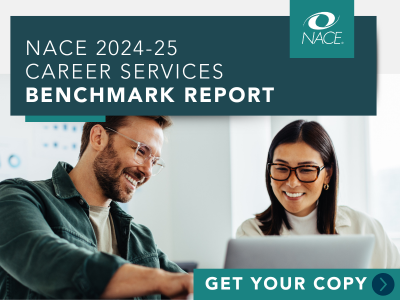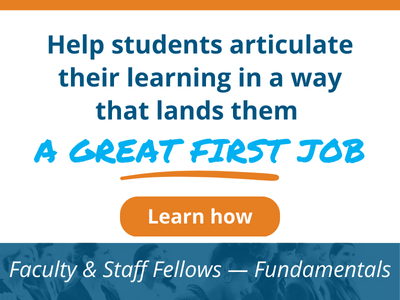NACE’s research shows that career services has a quantifiable effect on students and their entry into the world of work.
What is the value of career services?
It’s hardly a new question: Over the years, many career services professionals have been asked to respond, often when budgets are tight and administrators are looking for where to make cuts, but even when that’s not the case.
Survey Methodology and Respondents
Data for the 2022 Student Survey Report were collected from February 22, 2022, to May 15, 2022. The survey instrument was distributed to 1,522 NACE-member four-year colleges and universities; in turn, the member institutions distributed to the survey to their students.In all, 15,860 bachelor’s degree students responded from 262 four-year colleges and universities. Of those, 2,140 were Class of 2022 graduating seniors.
Results presented here were controlled for gender, race/ethnicity, age, and first-generation status. Specific characteristics regarding respondents that may affect their ability to compete in the job market, e.g., attendance at a prestigious institution, however, are not captured.
For more information about the report and its companion dashboard, see the NACE Store.
Traditionally, and often with success, the response has relied heavily on what the career center does—such as helping students learn how to market themselves and facilitating connections between students and employers. Data, when they are offered, have tended to be about how many—how many workshops were offered, how many jobs were posted, how many interviews were scheduled, how many students and employers were served, and so forth.
The problem is that neither the response nor the supporting statistics address how the career center’s services actually affect college students and their eventual career outcomes. The good news is that we can quantify the impact career services has on students and their entry into the world of work. In fact, NACE’s research has not only surfaced the connection between career services and job offers but also the role career services plays in how students view their institution and how career services impacts equity.
That doesn’t mean the traditional argument should be put aside. Instead, by weaving hard data into the traditional response, career services professionals can tell a story that leaves no doubt as to what career services brings to the higher education community and the students it serves.
It would be remiss not to mention that career development and career readiness should be an institutional priority and not a single office’s responsibility. However, when advocating for career centers—their resources and importance—we can clearly demonstrate their influence on student success. If an institution is concerned about student employment outcomes, this only strengthens the arguments for the proper resourcing of career centers so they can reach more students and lead career readiness initiatives.
By the Numbers
Overall, analysis of results from our Class of 2022 Student Survey found an astounding correlation between career services and use of those services by graduating seniors: Graduating seniors who used at least one service—any service—received an average of 1.24 job offers. And, for every additional service they used beyond just one, their average number of job offers increased 0.05.
In comparison, graduating seniors who didn’t use any of the career center’s services averaged 1.0 job offers. (FYI: Overall, the average number of job offers was 1.14—the highest we have recorded in our survey.)
When individual services are examined for their effects, help with a search for an internship or co-op, mock interviews, and networking preparation are the standouts. None of these are surprising. NACE has reported on the connection between paid work-related experience and job offers for a number of years, and this survey provides evidence of the impact career services has on paid internship participation. (More on that below.) The advantage gained by taking part in mock interviews has also been reported in the past and makes good sense in that interview performance is critical to a candidate’s success. Finally, networking has long been viewed as a key job-search strategy, and our results, which suggest that graduating seniors who got help in honing their networking abilities gained an advantage, fall in line with that.
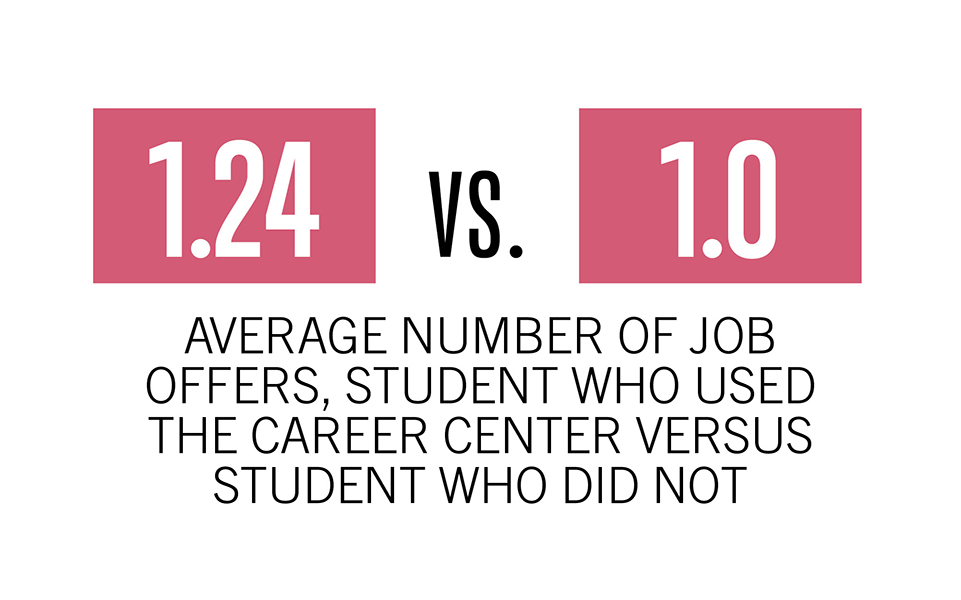
Career Services, Paid Internships, and the Student Experience
NACE research has consistently documented the connection between a paid internship and an increase in the number of job offers. In this survey, results show that those who have done a paid internship receive an average of 1.61 job offers compared to 0.95 job offers for those who have done an unpaid internship and 0.77 job offers for those who have not done an internship at all.
Our analysis of this survey, however, went much further.
For starters, our results revealed this astonishing fact: Students who use the career center’s help to find an internship are 2.2 times more likely to get a paid internship than an unpaid internship or no internship at all.
And there is more: Graduating seniors who took part in paid internships are 2.4 times more likely to say their degree is related to the job they ultimately landed—and those who believe their job and degree are related are 3.3 times more likely to say their institution prepared them well for their career.
Consequently, career services, through its role in helping students achieve paid internships, affects students’ overall experience with the institution. We have not researched how this affects alumni donations, but it is not a leap to suggest that those who are satisfied with how their institution prepared them are disposed to lend support.
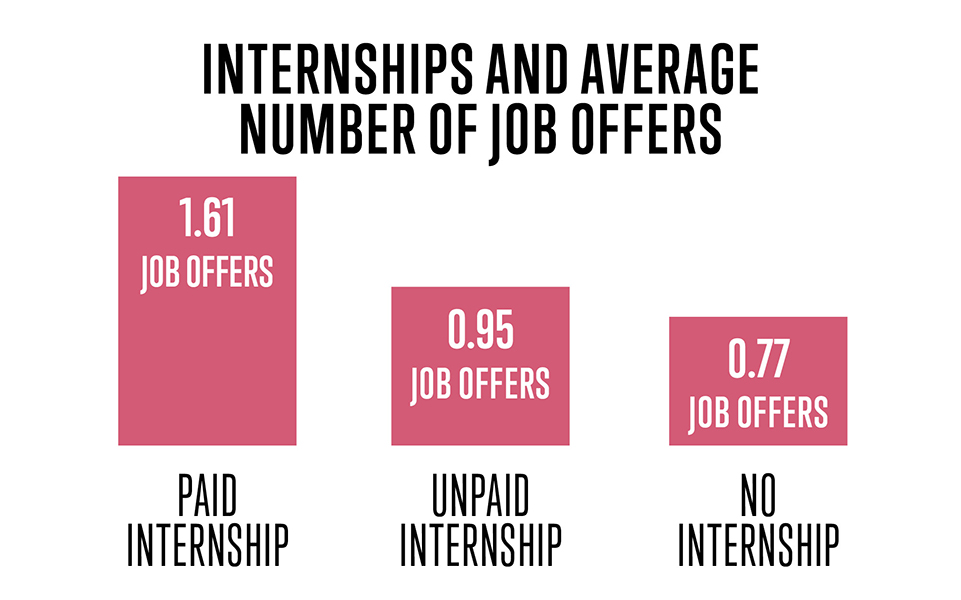
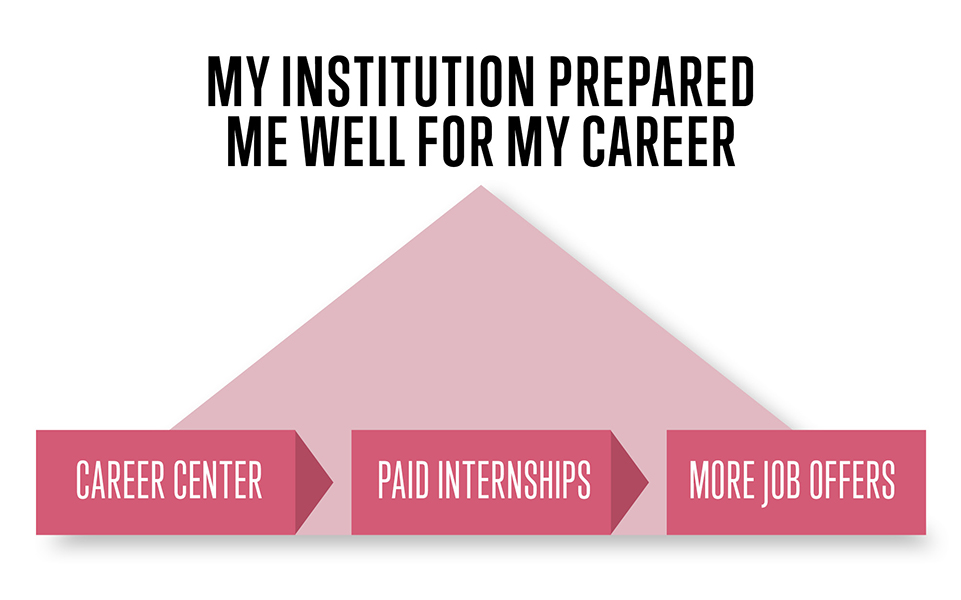
Career Services and Equity
As if that weren’t enough of a blockbuster, consider this: Our results demonstrate that career services impacts equity.
Anecdotal information has suggested that historically marginalized groups do not use the services of the career center in the same numbers as their counterparts, but our research shows this is not the case across the board. In fact, results show that Black students were more likely than their white peers to visit the career center in 2021-22. (See Figure 1.)
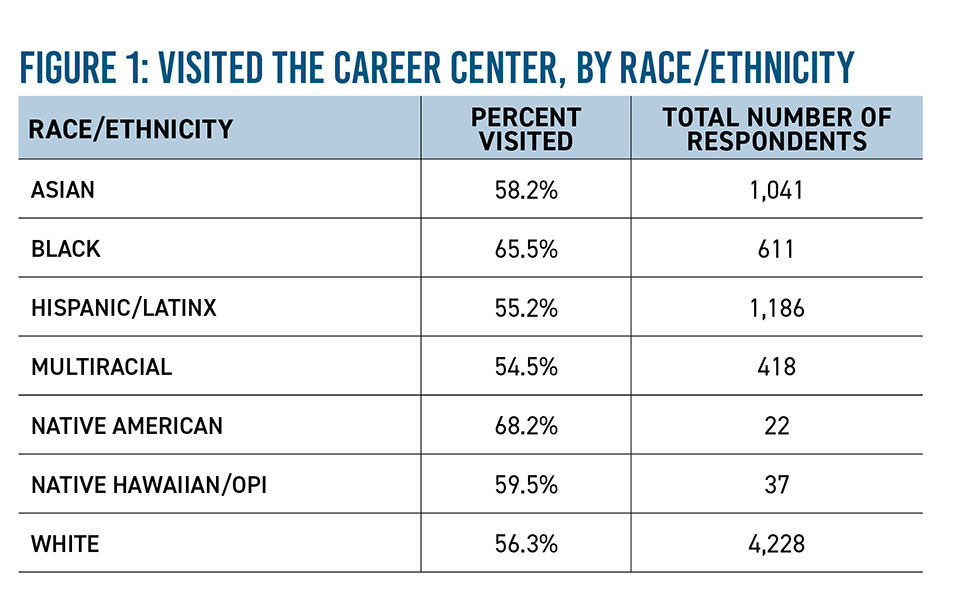
Implications and Recommendations
These statistics are just the beginning. We expect to delve into much more to tease out the connections career services has to student success. However, these new data and other results from NACE’s research can help career services professionals address the value question head-on. Here are recommendations for how to do that:
- Career centers can incorporate these data into the narrative they provide about their services to stakeholders. These statistics can also provide leverage in discussions about operating budgets and staffing.
- Career centers should track how their individual efforts affect outcomes so they can localize the statistics and point to the value the individual career center brings to its campus. Here’s where I’ll plug participation in our annual student survey: When you take part, you can get a set of results that reflect just your students. Your participation also helps to enrich the student respondent pool, which opens the door for more nuanced analysis. For details, contact our research team.
- Unfortunately, our report also indicates that the majority of students don’t use the career center’s most impactful services. Just 25.6% tapped the career center for help with internships, 20.8% took part in mock interviews, and 21.1% visited for networking preparation. Career services professionals need to communicate the value of these and other career center services to students, certainly, but also to faculty, parents, staff, and other stakeholders who can encourage students to use the services.
- Career centers can demonstrate their value by helping faculty demonstrate theirs: One of the other takeaways from our survey is that students need help in connecting what they are doing in the classroom with how that translates into career readiness competencies that employers value. Career services professionals can provide faculty with the tools and support they need to help students connect the dots.




